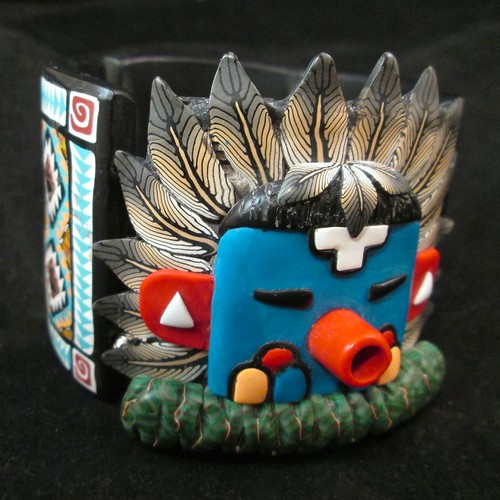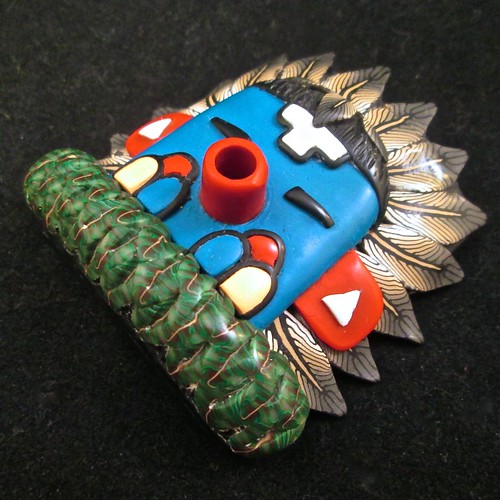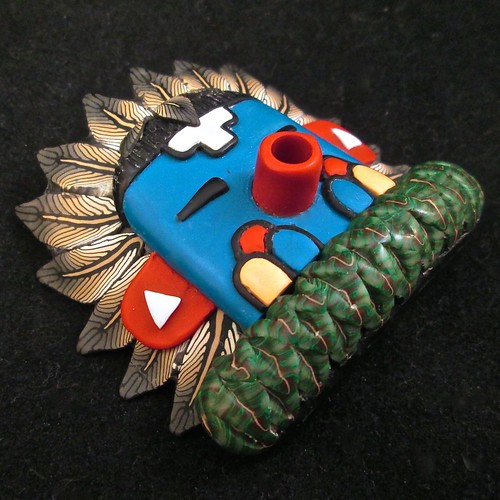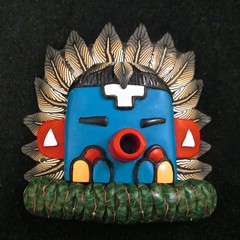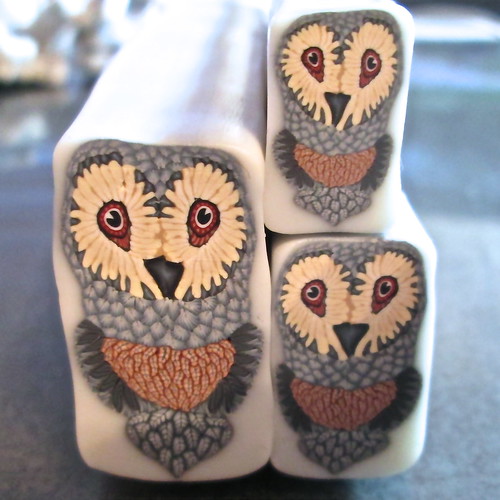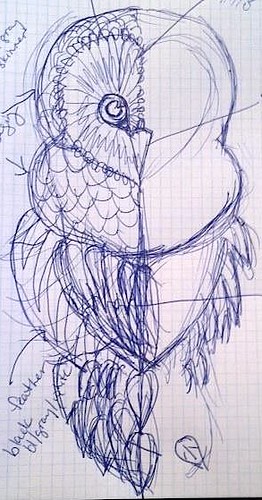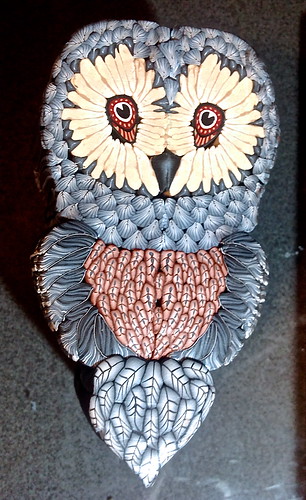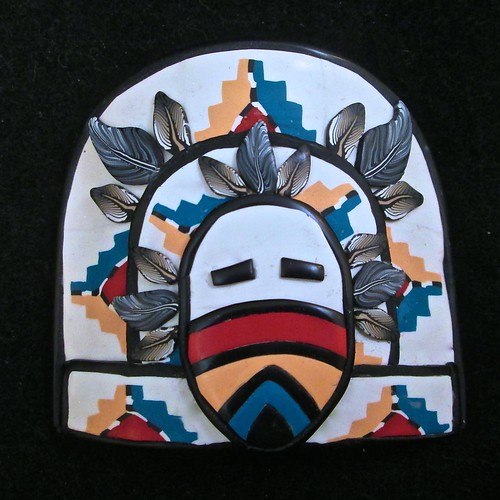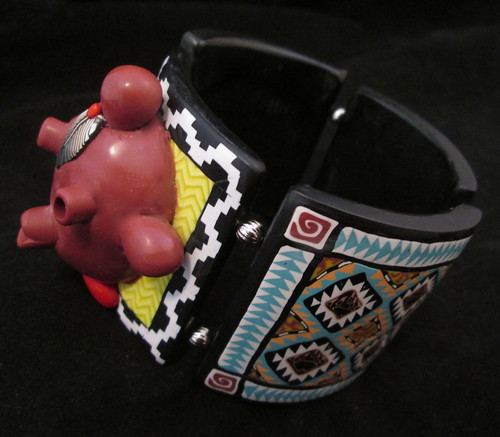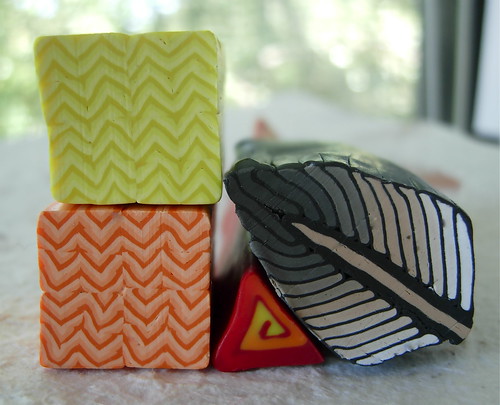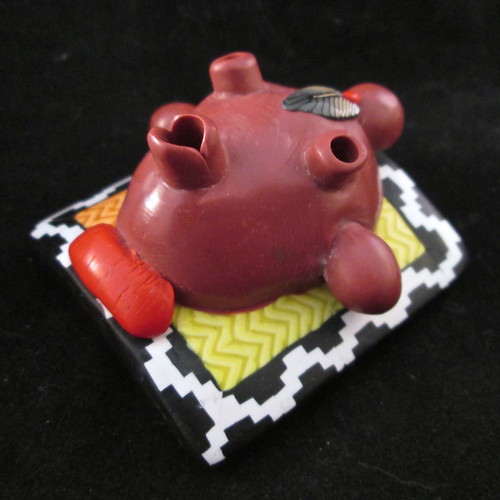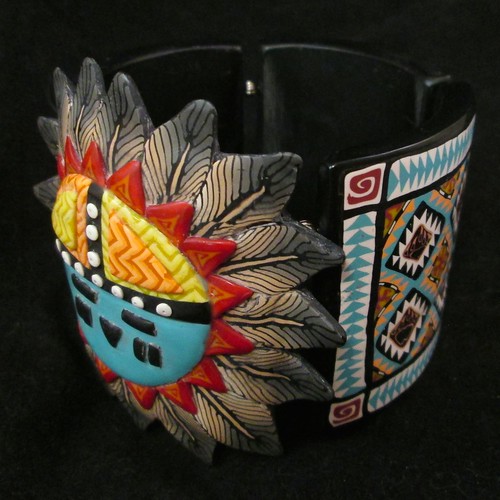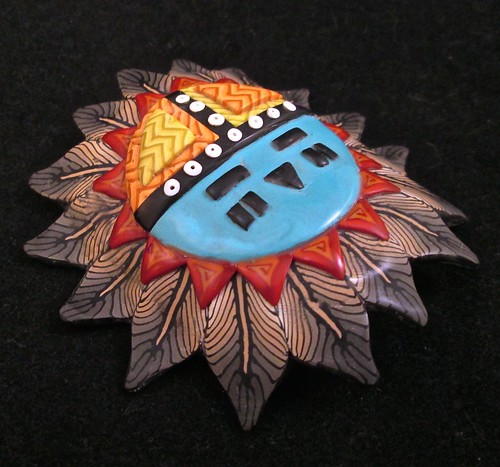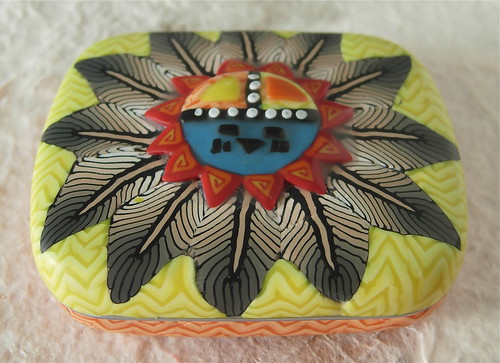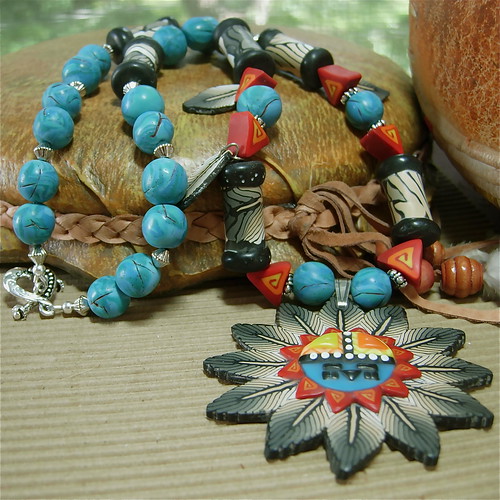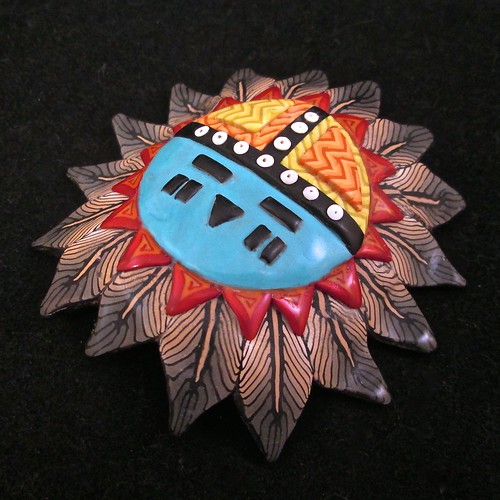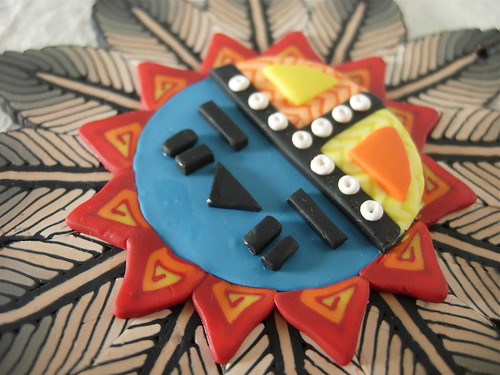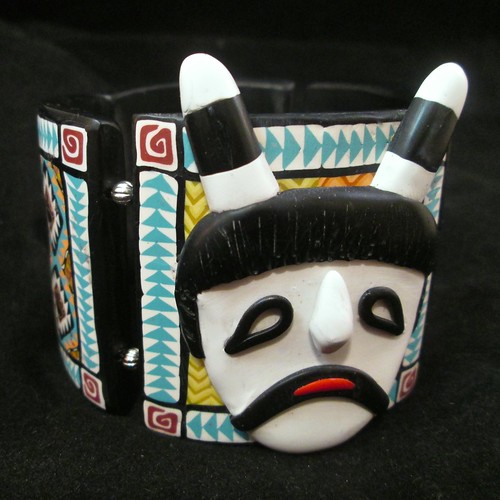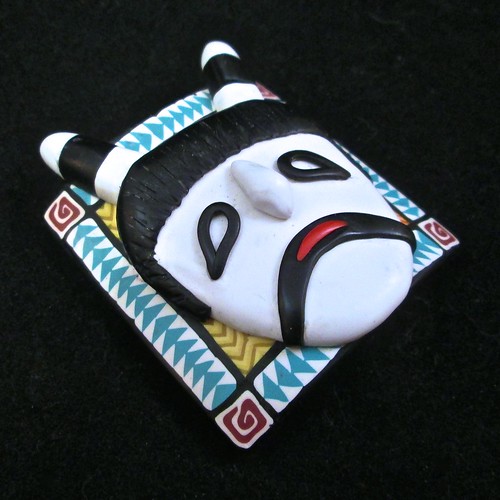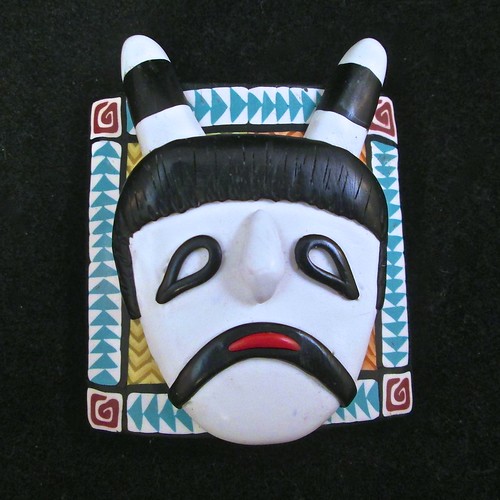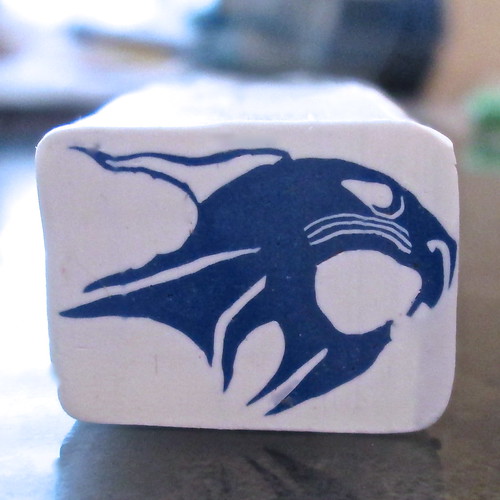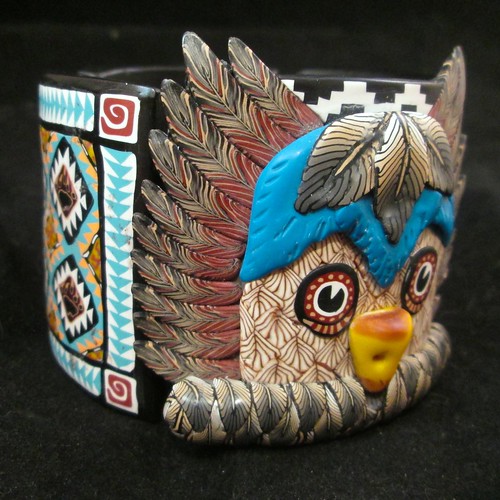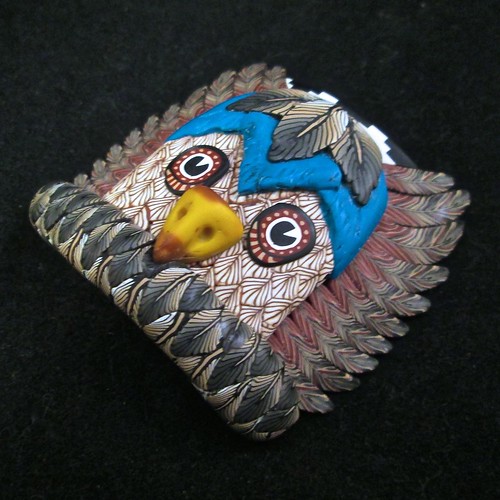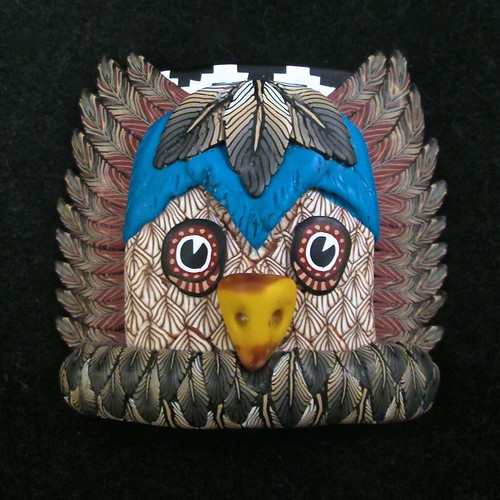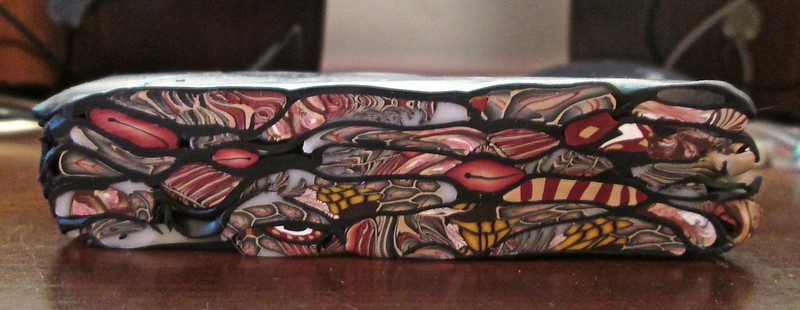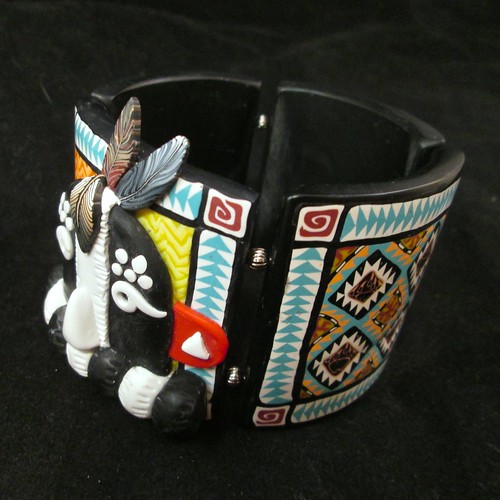 The Kokopelli is just revered as the herald of spring. Native American legend says that his flute can be heard in the spring breezes, bringing an end to winter. As he talks to the wind and sky, the sun comes out, the snow melts, the grass grows, and the birds and animals gather to listen to his songs. He symbolizes fertility, happiness & joy, and is luck for hunters. When this traveling prankster and seducer visits a village playing his flute, everyone sings and dances the night away. When he leaves in the morning, the crops are bountiful and the women are pregnant.
The Kokopelli is just revered as the herald of spring. Native American legend says that his flute can be heard in the spring breezes, bringing an end to winter. As he talks to the wind and sky, the sun comes out, the snow melts, the grass grows, and the birds and animals gather to listen to his songs. He symbolizes fertility, happiness & joy, and is luck for hunters. When this traveling prankster and seducer visits a village playing his flute, everyone sings and dances the night away. When he leaves in the morning, the crops are bountiful and the women are pregnant.
The Kokopelli has always been one of my favorite Native American images. As you can see below, I have used the image not only in polymer clay, but also in my other artwork. To me, he reminds me to celebrate life and all the joys it give you.
 In designing this little guy, I started - like my Clown Kachina - by attaching slices of my yellow and orange zigzag canes from my Sunface Kachina canes to a prebaked & sanded bracelet tile with the help of some Kato polypaste. I then also added the border and corner canes from my Southwestern Bear Claw bracelet tiles. While this background tile was caring, I cut out the face shape from scrap clay and covered it with a thin sheet of black clay. I added a strip of white down the center and textured the edges, and then added the nose. The eyes and eyebrow details were formed from thin extruded white clay and carefully shaped and attached. The color was formed from white and black balls cut in half and pressed together with the help of a touch of Kato polypaste and then textured on the edges. Once the background tile was cured and sanded, I pressed two feathers of different colors - one from each of my first two owl canes - to the top and then added the face, collar, and red ears to the tile with some Kato polypaste to secure the bonds. I placed an additional feather from my Sunface Kachina canes onto the forehead and white triangles to the ears as final touches.
In designing this little guy, I started - like my Clown Kachina - by attaching slices of my yellow and orange zigzag canes from my Sunface Kachina canes to a prebaked & sanded bracelet tile with the help of some Kato polypaste. I then also added the border and corner canes from my Southwestern Bear Claw bracelet tiles. While this background tile was caring, I cut out the face shape from scrap clay and covered it with a thin sheet of black clay. I added a strip of white down the center and textured the edges, and then added the nose. The eyes and eyebrow details were formed from thin extruded white clay and carefully shaped and attached. The color was formed from white and black balls cut in half and pressed together with the help of a touch of Kato polypaste and then textured on the edges. Once the background tile was cured and sanded, I pressed two feathers of different colors - one from each of my first two owl canes - to the top and then added the face, collar, and red ears to the tile with some Kato polypaste to secure the bonds. I placed an additional feather from my Sunface Kachina canes onto the forehead and white triangles to the ears as final touches.
| 
|
 | |

